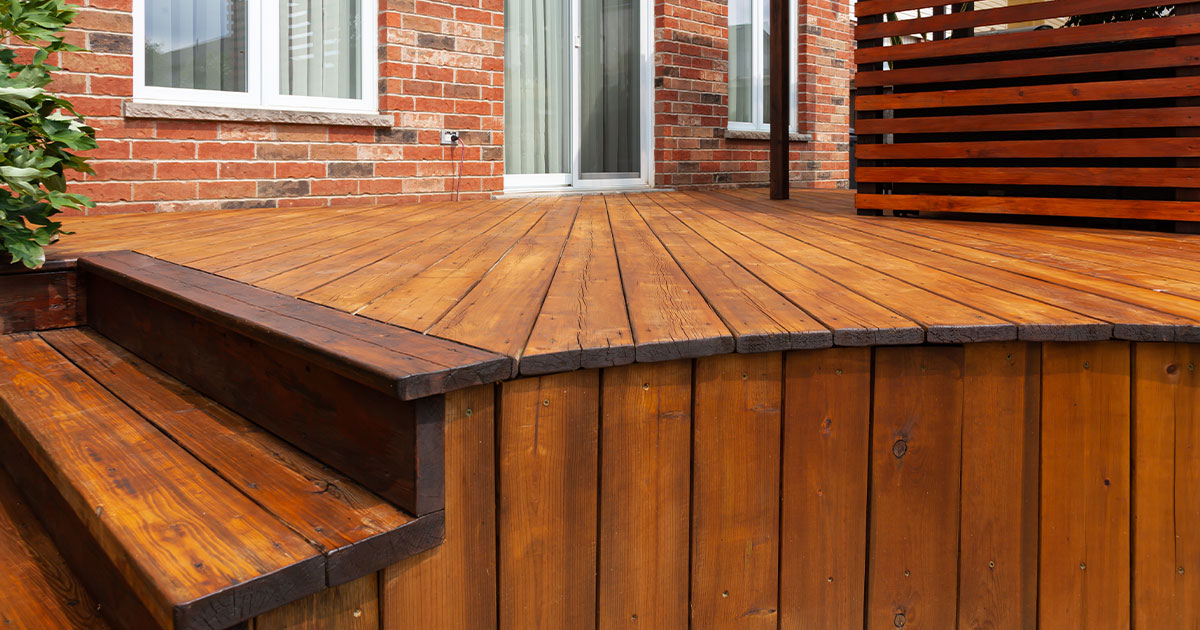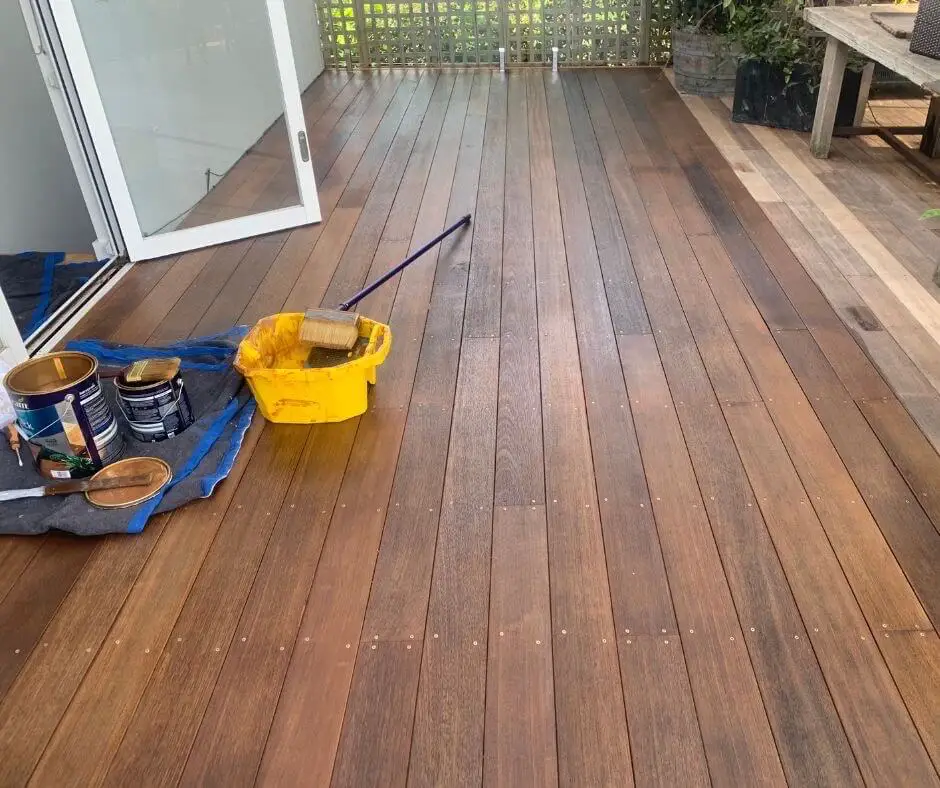Chicago Deck Staining Solutions: Expert Results Ensured
Chicago Deck Staining Solutions: Expert Results Ensured
Blog Article
A Comprehensive Guide to Different Kinds Of Deck Discoloration Techniques for Ultimate Defense and Appearances
In the world of deck upkeep, the art of discoloring stands as a critical action in the direction of both maintaining the honesty of your exterior room and boosting its aesthetic charm. As we navigate through the intricate world of deck staining strategies, one starts to value the nuanced techniques that can make all the distinction between a sub-par surface and a flawless one.
Recognizing Various Types of Discolorations
Different kinds of spots are typically made use of in the process of deck staining to attain different visual and safety effects. Transparent discolorations are suitable for showcasing the natural grain of the wood while providing minimal security against UV rays and moisture. On the various other hand, semi-transparent spots offer an equilibrium between shade enhancement and protection, allowing some wood grain to show through. For a much more opaque surface that offers optimum protection against the aspects, strong stains are the favored option. These discolorations can be found in a wide variety of shades and properly conceal the timber grain.
Furthermore, there are also specialized spots such as sealants and toners. Toners add a hint of color to the wood while offering minimal protection, making them appropriate for newer decks with less wear. Sealers, on the other hand, offer protection against moisture and UV rays without adding shade, making them a preferred selection for decks that currently flaunt a preferable tone. Understanding the qualities and benefits of each type of discolor is vital for attaining the wanted appearance and durability for your deck.
Choosing the Right Discoloration Shade
When taking into consideration the looks of your deck discoloration job, the choice of stain shade plays an essential duty in improving the protective high qualities of the picked discolor type (Stain Deck). The shade you select can substantially influence the total look of your deck, along with its capacity to endure the components in time
When picking a discolor color, it's important to think about the existing color pattern of your home's exterior. Integrating the deck stain with the total visual of your residential property can develop a natural and visually appealing outside room. In addition, the color of your deck stain can influence the temperature of the deck surface area; darker colors often tend to absorb more heat, while lighter colors show sunlight and remain cooler.
Additionally, the kind of wood you are staining will likewise influence how the discolor shade appears. Various timber species can engage with the tarnish in various methods, possibly modifying the final color. It's a good idea to examine the stain on a small, unnoticeable location of the deck to make certain the color turns out as preferred prior to continuing with the whole task.
Preparing Your Deck for Staining
To make certain a effective and durable deck staining project, extensive preparation of the deck surface is essential. Begin by cleaning the deck extensively to get rid of dirt, grime, mildew, and any kind of old tarnish or complete.
Examine the deck for any harmed or rotten boards that need to be replaced. Hammer down any kind of sticking out nails and sand any type of rough locations to make sure a wikipedia reference smooth surface for staining. Examine for any type of loose barriers or steps that might require tightening or repair.
As soon as the deck is clean, completely dry, and in good fixing, think about using a wood brightener to recover the deck's natural shade and open up the wood pores for far better discolor infiltration. Finally, shield any close-by plants, furnishings, or surfaces with plastic bed linen before waging the discoloration process. Correct preparation is essential to attaining a professional-looking finish and optimizing the long life of your deck stain.
Applying Spot With Numerous Techniques
For a specialist and flawless surface, the technique of using tarnish plays an important function in boosting the look and resilience of your deck. There are a number of methods you can make use of to ensure an effective application of discolor.
It is perfect for elaborate areas and getting to in between deck boards. Back-brushing after rolling is advised to also out the discolor and work it into the timber for much better penetration.
Spraying is another preferred strategy, using speed and ease of application, especially for huge deck locations. It is very important to use a top notch sprayer and be mindful of overspray. Pad applicators offer a smooth and also end up and are appropriate resource for both horizontal and upright surface areas. Whichever method you choose, ensuring correct preparation and following supplier guidelines will certainly assist accomplish a lasting and gorgeous tarnish surface on your deck.

Maintaining and Re-staining Your Deck
Proper upkeep and prompt re-staining are necessary for protecting the appeal and durability of your deck. Regular upkeep jobs include brushing up off particles, cleaning up with a why not try these out deck cleaner, and inspecting for any kind of indications of wear or damage. Dealing with issues without delay can stop much more significant troubles in the future. When it concerns re-staining your deck, the frequency relies on different factors such as the kind of discolor used, the climate in your area, and just how much deterioration your deck experiences. Typically, it is recommended to re-stain your deck every 2-4 years to keep its security and aesthetic appeals.
Before re-staining, make sure the deck is tidy, completely dry, and free of any previous stain residue. Select a top notch tarnish that matches your deck's product and gives the wanted degree of defense.
Verdict
To conclude, recognizing the various kinds of deck discolorations, selecting the ideal color, correctly preparing the deck, applying stain with different strategies, and re-staining the deck and keeping are necessary actions for supreme security and aesthetic appeals. By complying with these steps, you can guarantee that your deck remains in top problem for several years ahead.
In addition, the shade of your deck discolor can influence the temperature level of the deck surface area; darker shades have a tendency to absorb even more warm, while lighter colors reflect sunshine and stay cooler.
It's recommended to test the tarnish on a little, inconspicuous location of the deck to make sure the color transforms out as wanted before continuing with the whole project.

Report this page